“This is a Russian district after all”: emptiness as exclusion in urban space
Ķengarags is a typical large-scale residential area characterised by a uniform type of multi-storey residential buildings. There are five-storey and twelve-storey housing blocks built in the 1960s, as well as two-storey residential houses and detached houses built in the 1950s. [..] The residents refer to the Dole shopping centre, the Daugava River, and its waterfront promenade as the most characteristic landmarks of the neighbourhood, which, along with convenient public transport and greenery, are the area's main qualities.
From the explanatory memorandum of the Riga City Territorial Plan
Raksts latviešu valodā pieejams šeit.
I have been living in Ķengarags for more than 20 years – it is the second largest residential district by population in Riga, the capital of Latvia. Its 519-hectare territory, densely covered with high-rise apartment buildings during the Soviet period, is home to just over 45,000 inhabitants. All this time, I have been asking myself: what exactly is wrong with this place? From a pragmatic point of view, this is a very convenient area, with excellent public transport infrastructure that allows you to get to the city centre in a short time without traffic jams. Moreover, schools, healthcare centres, shops, and other services are available here. Additionally, many appreciate the extensive greenery and large courtyards, but above all, the promenade. This several-kilometres-long coastline with direct access to Latvia’s largest river Daugava has even been named the most beautiful walking route in Riga (Evelone 2022).
I don’t think I’d be wrong if I said that in many places in Europe all the above factors would be enough to make a residential area very appealing, and its real estate expensive. Paradoxically, all these exclusive advantages do not help Ķengarags gain status nor advance. On the contrary, a strange stagnation has set in.
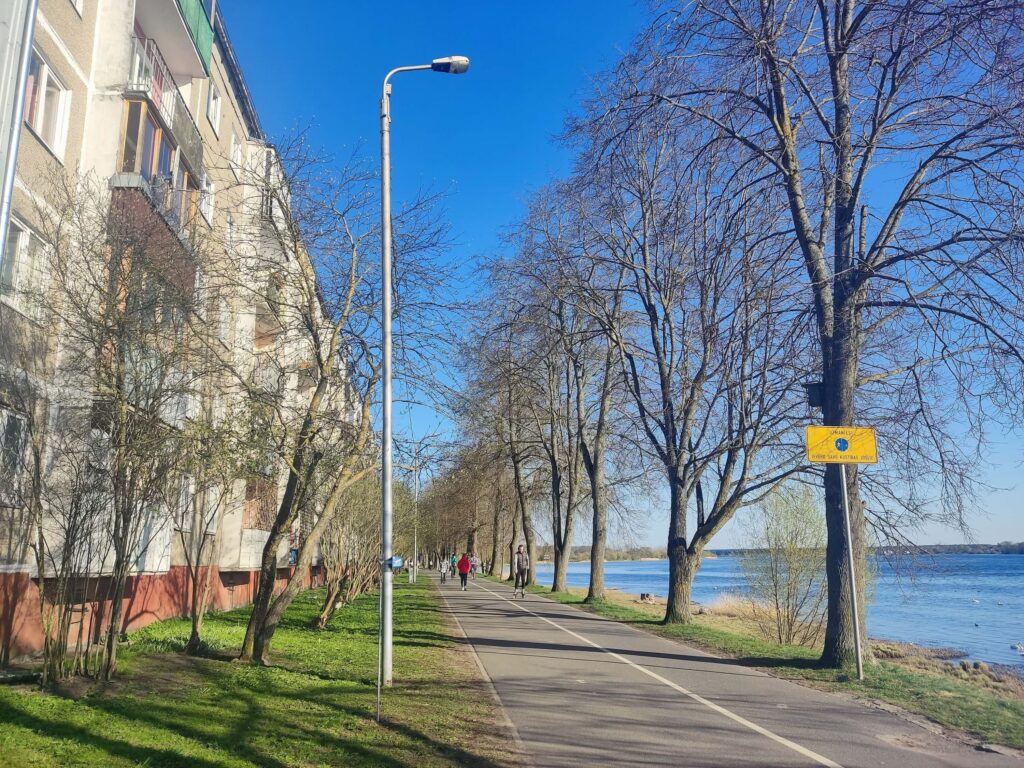
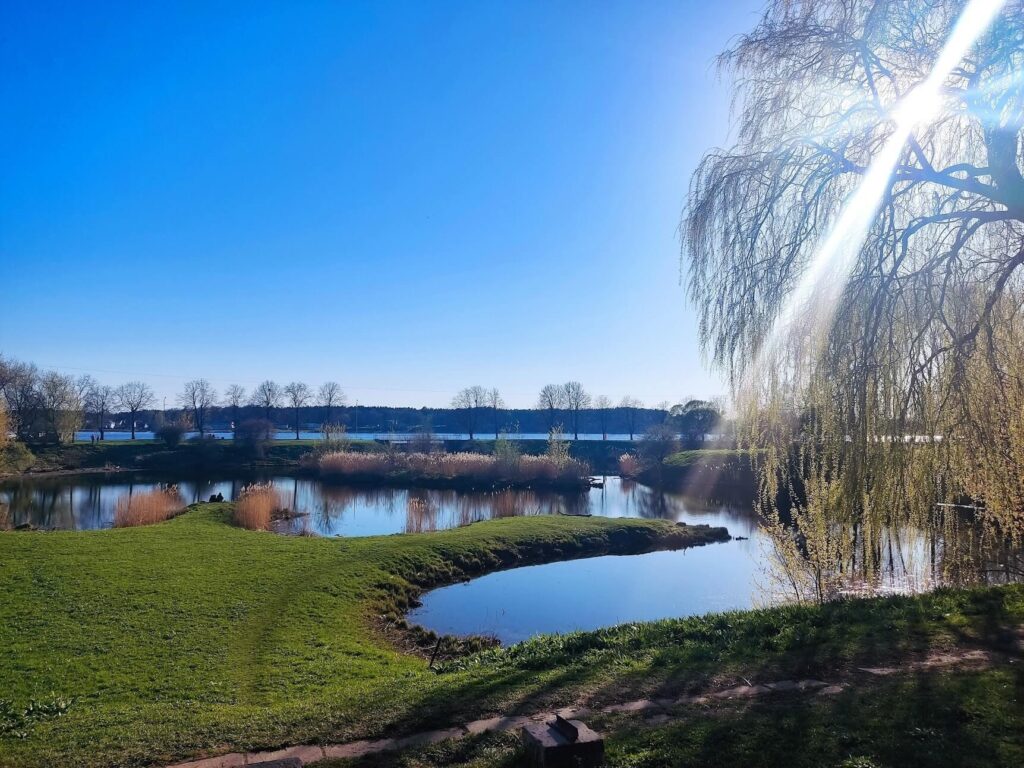
The attitude of the Riga municipality towards Ķengarags also raises some questions. Time and again, various cultural and sporting activities have mainly been implemented in other districts of the city. Promised investment projects, such as new low-floor trams and a multifunctional cultural centre, have not come to fruition. Neighbourhood activists point to the municipality’s formal approach to developing Ķengarags and its lack of interest in communicating with residents. On social media, people lament that “we get the feeling that our area is an outcast, and that we are not needed by the city. We are a part of Riga, but it does not feel that way”.
I suggest that a specific type of emptiness has taken shape in Ķengarags. It manifests in the exclusionary attitude of the municipality towards the district’s residents, as well as in public discourse about the district’s non-compliance with contemporary forms of urban modernity.
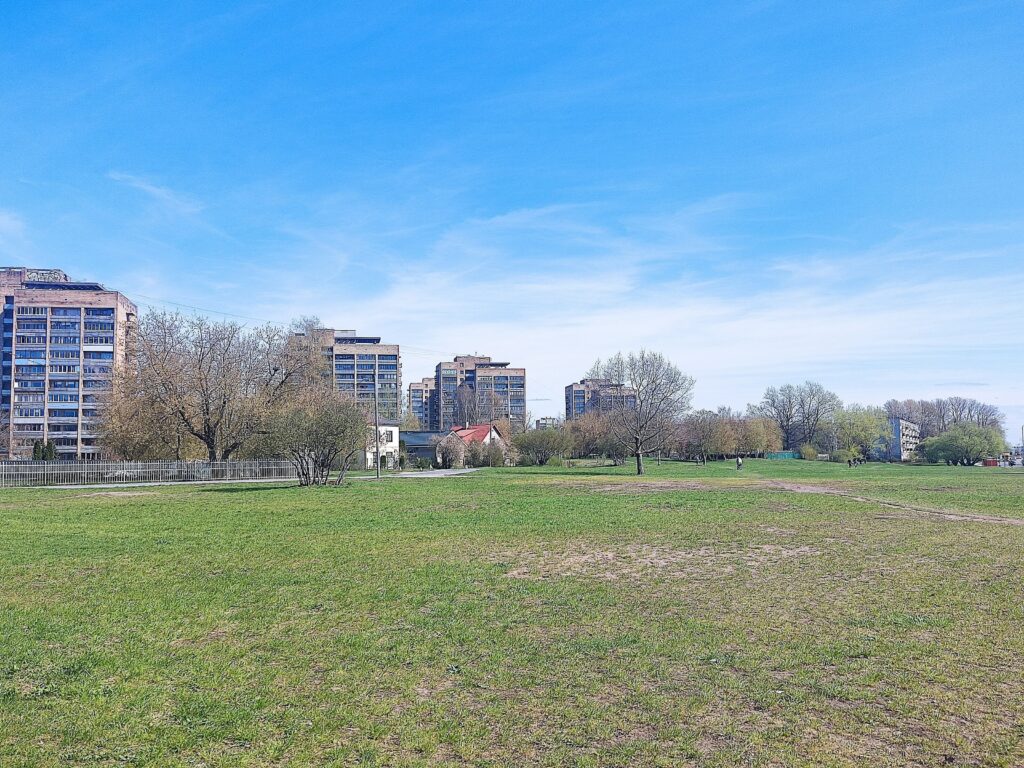

In 2022, I began researching the fate of Ķengarags during my social anthropology studies at Riga Stradiņš University. I turned my place of residence into a fieldwork site and sought to answer the question of what underlies this emptiness (Potetinova 2023). In the thesis that came out of this research I argue that the sense of emptiness in Ķengarags is rooted in a specific public discourse, in which the term ‘Russian’ is applied to this micro-district built during the Soviet era.[1]In Russian – микрорайон – name given in the Soviet era and still used in Latvia when speaking about a particular type of urban living space. This ethnonym has turned into a historical metaphor that suggests associations with the Soviet Union in Latvia. From the perspective of post-Soviet Latvian nationalism, it marks something that is worthless and miserable. The marking of Ķengarags as Russian contrasts it with the so-called historical Latvian neighbourhoods, which are treated as modern and promising. This subjects the area to structural violence, as it leads to underdevelopment and a lower quality of life.
Bad history vs good history
“What are the associations with Ķengarags? Many people think: so what is there in Ķengarags? Blocenes [slang for panel high-rise – here and after author’s note]. Soviet blocenes, and that’s it. It’s a semi-hooligan district, where there are often conflicts in the evenings,” Juris, an activist from this micro-district, shares his thoughts.
Agnija, a young Latvian woman in her 30s who lives in Ķengarags, has similar feelings: “What is there to see here? Only ‘boxes’. If there wasn’t a promenade here, there wouldn’t be anything at all”.
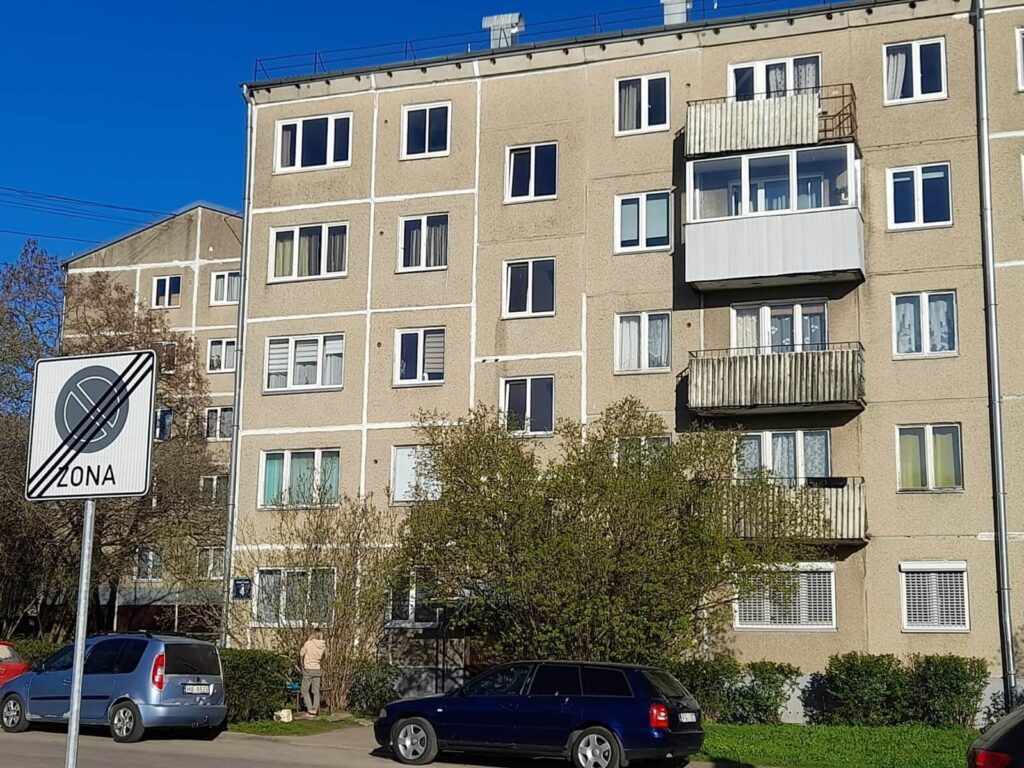
During my research, similar to researchers in other post-Soviet spaces, I repeatedly heard that ‘there is nothing here’, and that ‘nothing happens here’ (Gunko 2023). As Dace Dzenovska (2020) points out, “emptiness in Latvia is symptomatic of post-Cold War spatiotemporal arrangements of power”. My fieldwork revealed that emptiness does not only mean abandoned houses, closed schools, or non-operating buses in remote rural areas, but that there can also be feelings of abandonment, insignificance, and emptiness in the midst of the capital city.
At the time of our conversation, Agnija was looking for an opportunity to change her place of residence and move to Āgenskalns – unofficially, it is recognised as the most modern and desirable neighbourhood in Riga. She talked about the aura prevailing there, the cultural-historical environment, the old wooden houses, beautiful facades, and the community. Āgenskalns is the opposite of Ķengarags. The neighbourhood seems to have everything that can create a desire to belong, whereas almost none of that can be found in Ķengarags anymore. The dense Soviet-era development is not perceived as historically valuable. Āgenskalns, in turn, is considered more valuable because its buildings were built prior to World War II and prior to Soviet occupation. This allows the national – rather than the Soviet – history to come to the forefront.
The neighbourhood activists in Ķengarags are trying hard to unearth the area’s pre-Soviet history in hopes that it will help to propel Ķengarags into the future. There is plenty of pre-World War II history in Ķengarags, but their efforts are not enough: “All these multi-storey houses put together cannot compete with a hundred-year-old market,” concludes Juris unforgivingly, referring here to the market that sits at the centre of Āgenskalns. Thirty years after regaining independence from the Soviet Union, the Soviet charm is not competitive (Lejnieks 2017).
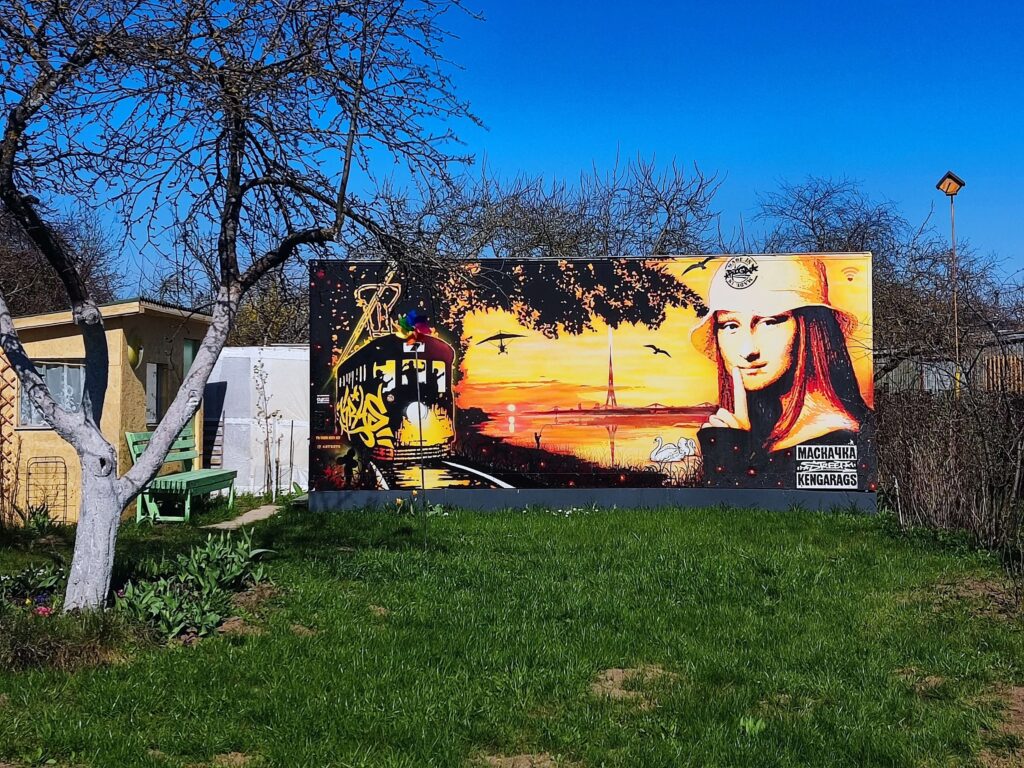
It should be noted, however, that ideas about good and bad history are contested in Latvian society: while in the Latvian narrative these houses represent emptiness and are seen as nothing but boxes, for many Russian-speakers this infrastructure still makes them nostalgic for bygone times: “Какое было прекрасное время и люди были добрые и приветливые и не было разницы русский ты или латыш. Только в памяти все осталось о той прекрасной жизни.”[2]Translation from Russian: What a wonderful time it was. People were kind and friendly and it didn’t matter whether you were Russian or Latvian. That beautiful life lives on only in memories.
Similar comments appear on social networks in Cyrillic under historical photographs with scenes from life in the district. For this section of society, micro-districts hold memories of sunny childhoods, school and youth – родное место [‘native place’ in Russian] – which stand in contrast to the official discourse of greyness and impersonality. Moreover, for some Russian speakers, this infrastructure belongs to the great heroic story of the Soviet army’s victory over fascism in World War II. The myth of fathers and grandfathers who not only liberated but later ‘built everything’ makes it part of their family history. For them, this home is a symbol of a faraway victory. Nostalgia acts, in Svetlana Boym’s (2002) words, as a defence mechanism in the face of present-day challenges, among them the problems of integration in Latvia.
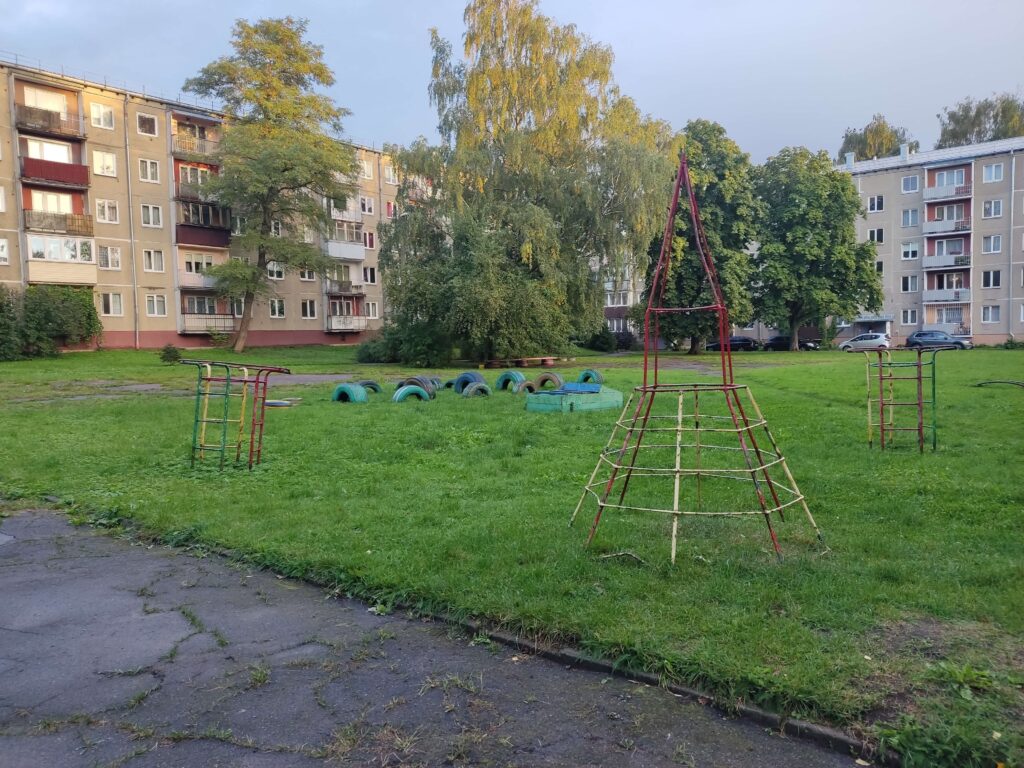
Micro-districts vs neighbourhoods
Riga city council sees the districts that rose up one after the other on the outskirts of Riga under Nikita Khrushchev’s Soviet-era mass housing programme as a problem: “The micro-districts are always there like toothache,” my informant – a civil servant – tells me. In planning documents, they are also labelled as grey, impersonal, and of low quality, even though they have potential for revitalisation. It is as if the people here disappear, which is also evident in the quotation at the beginning of this blog, in which I use the description of Ķengarags from the Riga City Territorial Plan, the current urban planning document (RCCCDD 2021).
“When we say the word micro-district, we mean the buildings rather than the inhabitants” (Zvirgzdiņš 2008). These districts in Riga are contrasted with historic neighbourhoods [apkaimes in Latvian], such as the aforementioned Āgenskalns, which predate World War II. In the Riga City Territorial Plan, Āgenskalns is described as having valuable cultural heritage, creative entrepreneurs, and an active community with markets and cultural events (apkaimes.lv). Moreover, in a situation where the Development Strategy of Riga is currently monocentric, with the investment flow being prioritised towards the city centre, it is these historic neighbourhoods that are ahead of the rest of Riga’s residential districts and are currently experiencing a renaissance.
It is important to point out that, according to statistics, more than 60% of the population in the neighbourhoods experiencing renaissance are Latvians. In contrast, the Soviet-era districts remain an inescapable, massive reminder of trauma embedded in the material structures of the urban environment. From being considered modern during the Soviet period, bringing with them high standards of living for all (Reid 2006), these micro-districts have become a wound, to borrow the term suggested by Jane Schneider and Ida Susser (2003), which still has not healed in Latvian collective memory. This legacy transcends time and is like a portal to a specific period of history that is surrounded by negative connotations – oppression, repression, lies (Yurchak 2005).
As I conclude in my research, the experience of living in Riga can differ depending on whether you live in a micro-district or a neighbourhood. Infrastructure alone is no longer enough to experience and feel life beyond mere existence and to be able to call a place home. Some people need an aura, others opportunities for socialising and a sense of community.
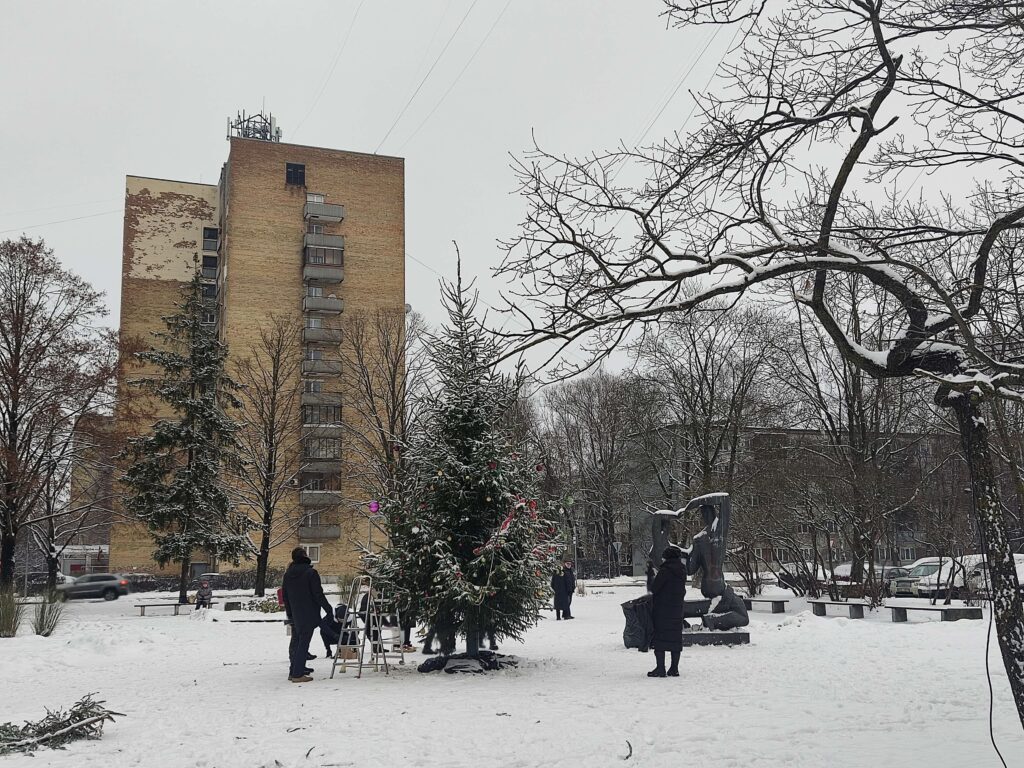
Meanwhile, others have found a counterbalance in the aforementioned greenery: “The most beautiful places in Ķengarags overlook the river. It is not the brick boxes, but the river that gives this neighbourhood its strength,” reads one Facebook comment. However, along with the worthless Soviet-style mass housing, Ķengarags has another ‘big disadvantage’: “This is a Russian neighbourhood after all,” Agnija says, grimacing, as if in disgust.
The label ‘Russian’
For many decades, the word ‘Russian’ in Latvia has not only been used to describe a particular ethnic group, but also a collective trauma, one that is felt rather than articulated and that shapes the orientation of Latvians in public and political life (Hochschild 2016). The folklorised expression ‘the Russians are coming’ encapsulates the most tragic pages of this country’s history. As Latvian journalist Sallija Benfelde (2022) remarks, “very often we look at everything related to Russians and anything to do with them with suspicion, because the experience of both 1940 and the fifty years of occupation has not disappeared. I remember, for example, when I was a child, the worst thing my mother could say in our home when she was angry about a prank was: ‘You’re like a Russian!’”.
My informant, a Latvian, also asks rhetorically: “Yes, but why do we get such a strange feeling when we say the word ‘Russian’…”. Historian Marcus Meckl points out that in Latvia, Russian speakers are considered part of the legacy of the oppressor (Meckl 2016). Moreover, researchers at the Providus Center for Public Policy have found evidence that “the discourses of identity and threat that are produced by the major political parties and the Latvian mass media work against the formation of political cooperation between representatives of the two largest ethno-linguistic groups” (Golubeva et al 2010), namely Latvians (62.9%) and Russians (24.2%) (CSB 2022).
Analysing parliamentary debates in Latvia between 2007 and 2009, the researchers concluded that “political parties in the Latvian Saeima regularly found ways to assign blame for the Soviet past and current political problems on ethnic/linguistic minorities – Russian-speaking “non-Latvians” were the most frequent targets of such delegitimising rhetoric” (CSB 2022). Others have also written about the exclusion of minorities. For example, Dace Dzenovska (2018) points out that “from the perspective of the Latvian national state, Latvia’s minorities can live this virtuous life if they recognize […] that they live in someone else’s state, that is, in a state that belongs to the Latvian cultural nation. They can reside in this state, but it can never be truly theirs”.
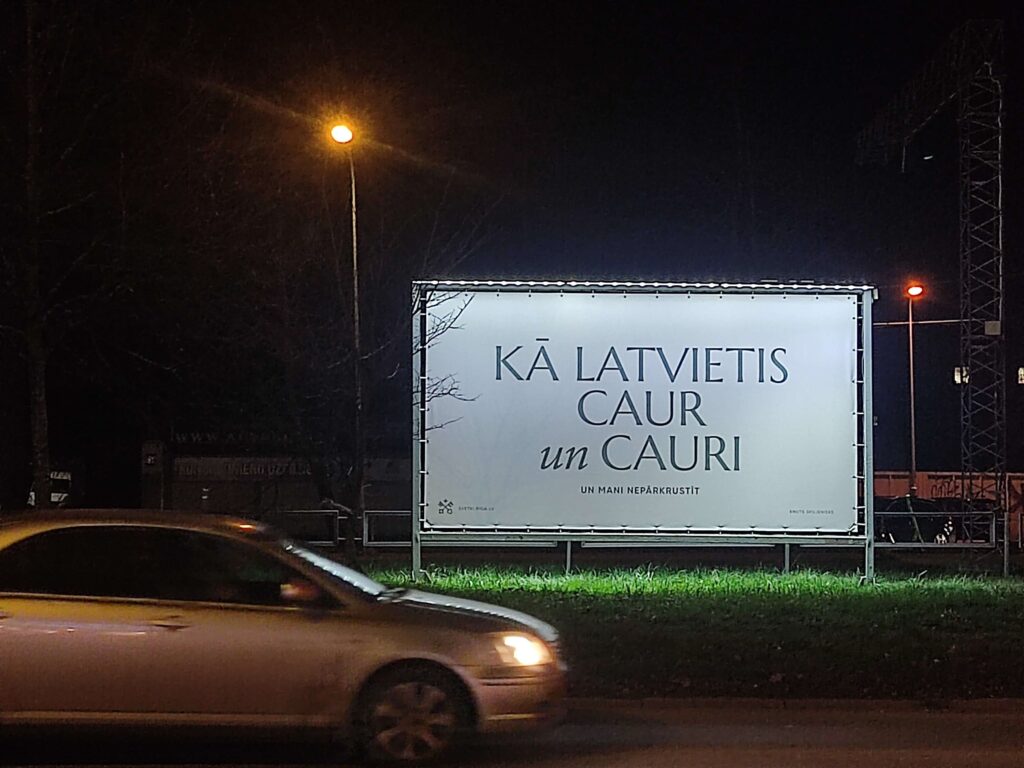
The Russo-Ukrainian war has intensified the expectations and demands directed at Latvia’s Russian-speaking community. For example, requirements to be able to and to communicate in Latvian in everyday life have been strengthened, and Latvia’s Russian-speakers are expected to condemn the Russian invasion of Ukraine, recognise the 1940 occupation of Latvia (rather than think of it as an annexation, for example), and be critical towards the Soviet period. These and other criteria continue to serve as the basis for a very simplistic public and private narrative dividing these people into good and bad Russians, drawing lines between ‘us’ and ‘them’.
In my research, I discovered how these boundaries are drawn in the urban environment and how otherness is created. As Jean-François Staszak (2009) puts it, “certain types of spatial organization, like segregation or territorial constructions, allow the opposition between the ‘self’ and the ‘other’ to be maintained or accentuated”. This also manifests in the juxtaposition of micro-districts with historic neighbourhoods. The paradox is that when trying to achieve a national state and addressing historical injustices by tagging Riga’s micro-districts as ‘Russian’, the authorities – and the public – exclude not only particular spaces, but also those who live there, Latvians and Russians alike.
In the case of Ķengarags, almost 40% of its residents identify as Latvian, while in another micro-district Purvciems Latvians statistically outnumber Russians (CSB 2022). Nevertheless, the label ‘Russian’ attaches to both and determines their fate in the urban landscape.

It should be mentioned that Riga does have a strategy to tackle the problem of micro-districts – through revitalisation and development of districts and neighbourhoods. This, in my view, “embodies a kind of antidote – a solution whose ultimate goal should be to transform or completely erase these Soviet-era wounds, allowing micro-districts to aspire to the characteristics of a humane, modern and European place to live” (Potetinova 2023). This strategy was publicly announced in 2008, but, as my research shows, its promises had not yet reached Ķengarags in 2023.
To my own surprise, soon after I began to publicise the results of my research, I received news from Riga City Council that there are plans for a water tap on the promenade, that there will be a street food festival and a neighbourhood festival held in Ķengarags in summer 2023, and that construction will begin for refitting the tracks for low-floor modern street cars. Moreover, the renovation of the cultural centre was pronounced to be among the main tasks of urban development in the district.
The year is still young, and none of the promises and plans have been fulfilled. But even if they will come to fruition, will that put an end to stagnation in Ķengarags? Will Ķengarags obtain higher status? Will those who live here begin to feel like a significant part of the city and the state, and statements like ‘there is nothing here’ will soon be forgotten? Will attention paid to the district by Riga City Council change the way the public views it? Of course, I would like to believe it as a resident of Ķengarags, but, as an anthropologist who has looked into the problem of nationalism, I am careful about being overly optimistic.
Footnotes
| ↑1 | In Russian – микрорайон – name given in the Soviet era and still used in Latvia when speaking about a particular type of urban living space. |
|---|---|
| ↑2 | Translation from Russian: What a wonderful time it was. People were kind and friendly and it didn’t matter whether you were Russian or Latvian. That beautiful life lives on only in memories. |